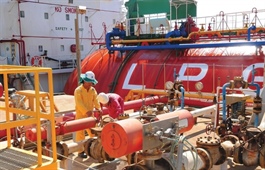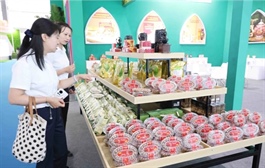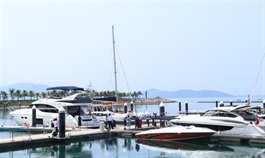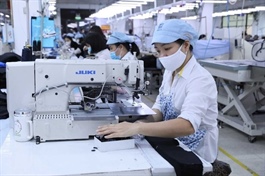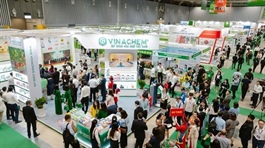New initiatives push railway development to next level
New initiatives push railway development to next level
While Vietnam’s railway development is travelling in the right direction, the outlook remains complex in terms of sufficient investment.
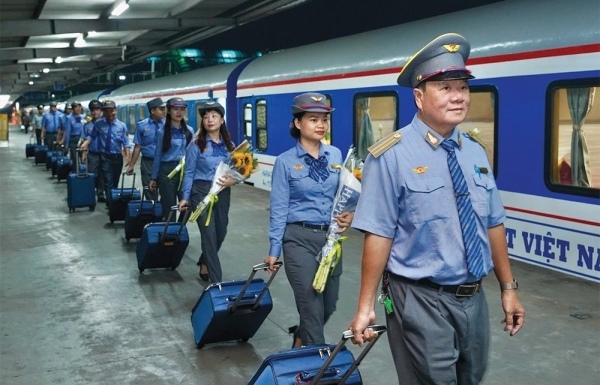
Advances in the rail system will go some way to improving Vietnam’s overall connectivity |
After months of waiting, Vietnam Railways (VNR) received the go-ahead in early April to establish a joint venture with various domestic and foreign partners in the railway industry, with it being the controlling stakeholder.
As per the April 5 conclusion on the matter, VNR is required to preside over and coordinate with partners to prepare the document about a railway industrial complex in accordance with regulations, and submit to authorities for consideration.
Hanoi People’s Committee was also asked to consider and complete the procedures to transfer 250 hectares of land in Phu Xuyen district to VNR to build the complex.
To facilitate future operation, the railway giant received approval to increase the charter capital. At present, authorised agencies are directing the preparation of the VNR restructuring plan towards becoming a group model and will be completed in June, thus enabling it to participate in the implementation of projects right from the investment preparation stage, the implementation process, management, operation and maintenance of infrastructure.
The prime minister also asked relevant ministries and agencies to make changes in the legal framework to make them consistent and create better conditions for potential investors.
Dang Sy Manh, chairman of VNR, said that the railway industry was still limited. There are 33 VNR units nationwide participating in the industrial railway segment, which only meets the needs of repairing and replacing the existing domestic railway system, while having no export products and no electric locomotives.
“This is one of the first steps towards autonomy, aiming to participate more deeply in the supply chain, becoming a supplier of materials and mechanical spare parts for the North-South high-speed railway, as well as urban railway lines in Ho Chi Minh City and Hanoi,” he said.
The railway industry is attracting more than ever the interest of private investors. For instance, Vingroup in April sent a document to Ho Chi Minh City’s Department of Finance on the high-speed urban railway that will connect the city centre with Can Gio district.
The initiative is expected to be carried out in the public-private partnership (PPP) model. Accordingly, Vingroup will be responsible for arranging all investment capital, construction, management and operation in line with legal regulations.
The railway line would boast a main line length of about 48.5km, and infrastructure designed with a speed of 250km per hour. Its passenger transport capacity will be 30,000-40,000 people per direction each hour.
In the central region, businesses and investors are learning about new opportunities. Authorities of the south-central province of Quang Nam have called for investment in two urban railway projects connecting Hoi An and Chu Lai with Danang, which are expected to create momentum in inter-regional transport infrastructure, as well as encourage economic and tourism development in the region.
For the Lao Cai-Haiphong railway venture, VNR has negotiated with partners and signed an MoU with Dalian Locomotive and Railway Carriage Co., Ltd. of China to prepare the route, which will pass through Hanoi.
Railway expert Khue Nguyen said that these are good signals for Vietnam’s railway industry. He cited transit-oriented development (TOD) investment as an example, taking urban railway traffic connections as a concentration point for residential areas, commercial services, and offices nearby.
“While TOD is promising, market risks are hindering private investors to make the next steps. Strategic risks include cashflow resulting from legal building, high land prices leading to no interested investors, and competition from surrounding areas. And external risks potentially include legal changes, trade conflicts, poor GDP, low revenues, and others,” he said.
Expert Le Net gave Thu Duc station TOD as a case study. Its ambitions in the next five years will be more than 25,000 users of the metro line, a stable land price increase of 20-30 per cent, and several major investors joining PPP initiatives in the TOD area.
“However, this project faces many considerable risks. Specifically, the sluggishness in construction of the metro negatively affects TOD. Moreover, unclear planning and overlapping among districts, Thu Duc city, and the Department of Planning and Architecture pose challenges,” Net said.
“Global experience and research shows that the orientation of railway industrial development must be based on the market size and development level of the metallurgical, mechanical engineering and supporting industries. To ensure a large enough and effective market size, railway industry development needs to be studied for national railways, high-speed railways, and urban railways,” Net added.
According to the Vietnam Railway Authority, countries that developed railways later all followed the model of gradually increasing the localisation rate of railway industry, such as China, Spain, and Poland. The most important step is to form joint ventures with large corporations capable of integrating the entire system, as seen with Kawasaki in Japan, Siemens in Germany, and Bombardier in Canada.
To encourage development of the railway industry, in the initial stages, governments of those countries focused on using budget capital to invest in infrastructure, and purchasing the entire system of locomotives, signalling, consulting services, design, and more, alongside policies of land tax and import tax exemption for initial schemes, the authority added.
- 15:00 10/05/2025





